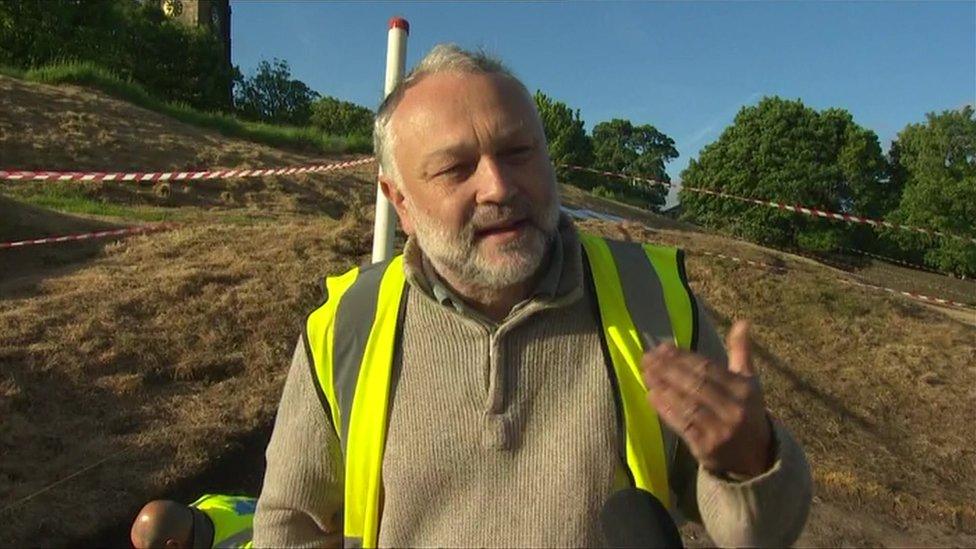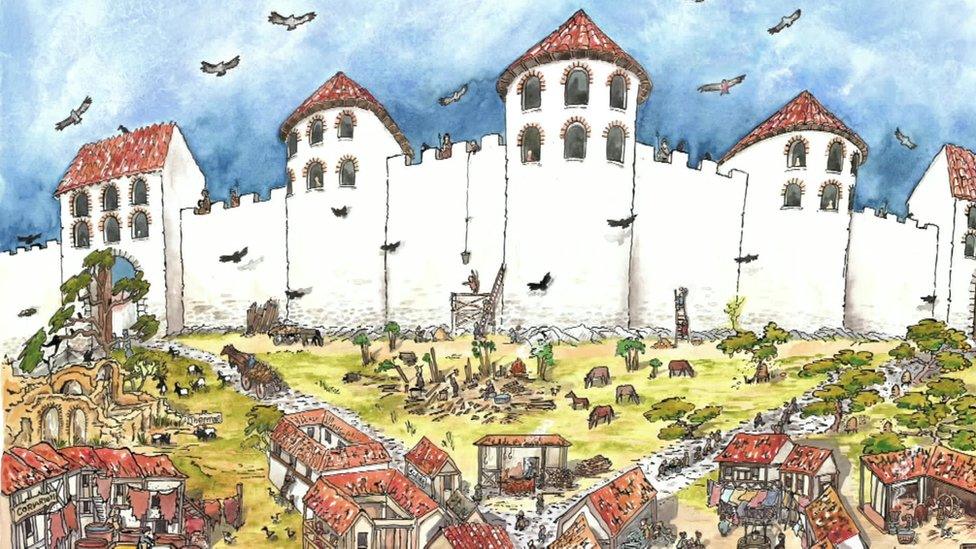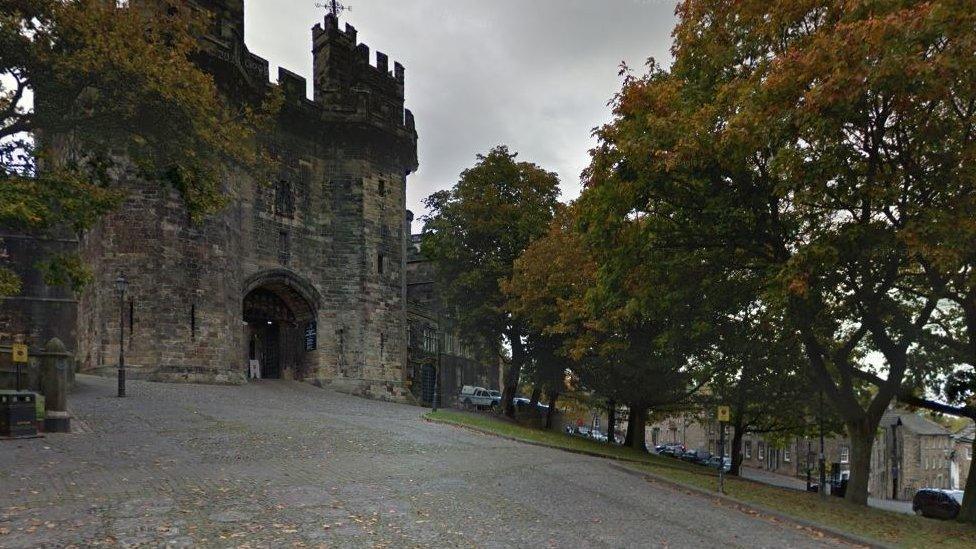Evidence of Roman fort uncovered near Lancaster Castle
- Published
Volunteers have travelled from around the UK and abroad to take part in the dig at Lancaster Castle
Evidence of a major Roman fort, designed to keep invaders out of Britain, may have been unearthed by archaeologists in Lancashire.
A two-week excavation has revealed evidence of a Roman wall and road in a field close to Lancaster Castle.
They are believed to be the remnants of a large 4th Century shore fort built to stop seaborne raids and immigration.
Lead archaeologist Jason Wood, who specialises in Roman fortifications, said it was a "remarkable" find.
He said: "We did a geophysical survey a couple of years ago which suggested that the corner of the fort lay in this field.
"We excavated here and...you can see the junction of the edge of the wall and an external road surface."

Lead archaeologist Jason Wood said Romans were "particularly concerned with seaborne raiding"
The excavation has partly re-opened trenches dug in the late 1920s and early 1970s in the hope of understanding previous research.
Mr Wood said: "The Romans in the later period, in the 4th Century, were particularly concerned with seaborne raiding and immigration.
"The borders were becoming more porous in the Roman empire and these large shore forts were erected around the south, the east and latterly the west coast of Britain to control immigration, to control raiding and to act as supply bases for the army."
Lancaster Castle was built on the site of the fort which stood as a bastion against the forces of the ancient Picts and Scots tribes.
The buildings include a 12th Century Norman keep, a 14th Century Witches' Tower and the 15th Century Gatehouse.

The Roman fort was built by the Romans to defend themselves from invaders attacking from the sea

Lancaster Castle later served as the courtroom where 10 people were convicted of witchcraft in 1612
- Published23 May 2016
